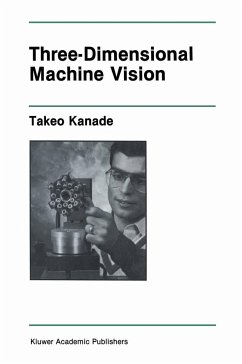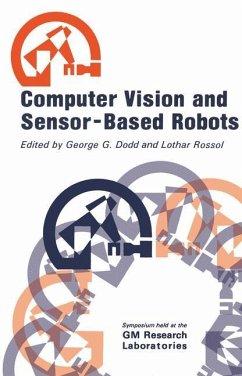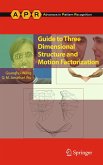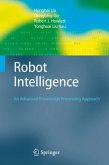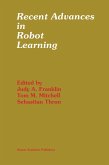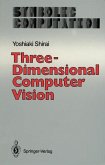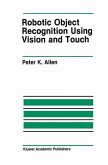Arobotmustperceivethethree-dimensionalworldifitistobeeffective there. Yet recovering 3-D information from projected images is difficult, and still remains thesubjectofbasic research. Alternatively, onecan use sensorsthatcanprovidethree-dimensionalrangeinformationdirectly. The technique ofprojecting light-stripesstartedto be used in industrialobject recognition systems asearly asthe 1970s,andtime-of-flight laser-scanning range finders became available for outdoor mobile robotnavigation in the mid-eighties. Once range data are obtained, a vision system must still describe the scene in terms of 3-D primitives such as edges, surfaces, and volumes, and recognize objeCts of interest. Today, the art of sensing, extractingfeatures, and recognizing objectsbymeans ofthree-dimensional rangedataisoneofthemostexcitingresearchareasincomputervision. Three-Dimensional Machine Vision is a collection of papers dealing withthree-dimensionalrangedata. Theauthorsarepioneeringresearchers: some are founders and others are bringingnew excitements in thefield. I have tried to select milestone papers, and my goalhas beento make this bookareferenceworkforresearchersinthree-dimensionalvision. The book is organized into four parts: 3-D Sensors, 3-D Feature Extractions,ObjectRecognitionAlgorithms,andSystemsandApplications. Part I includes four papers which describe the development of unique, capable 3-D range sensors, as well as discussions of optical, geometrical, electronic, and computational issues. Mundy and Porter describe asensor systembasedonstructuredilluminationforinspectingmetalliccastings. In order to achieve high-speed data acquisition, it uses multiple lightstripes withwavelength multiplexing. Case, Jalkio,andKim alsopresentamulti stripe system and discuss various design issues in range sensing by triangulation. ThenumericalstereocameradevelopedbyAltschuler, Bae, Altschuler, Dijak, Tamburino, and Woolford projects space-coded grid patterns which are generated by an electro-optical programmable spatial viii PREFACE light modulator. Kanade and Fuhrman present a proximity sensor using multipleLEDswhich areconically arranged. Itcan measurebothdistance andorientationofanobject'ssurface.
Hinweis: Dieser Artikel kann nur an eine deutsche Lieferadresse ausgeliefert werden.
Hinweis: Dieser Artikel kann nur an eine deutsche Lieferadresse ausgeliefert werden.

